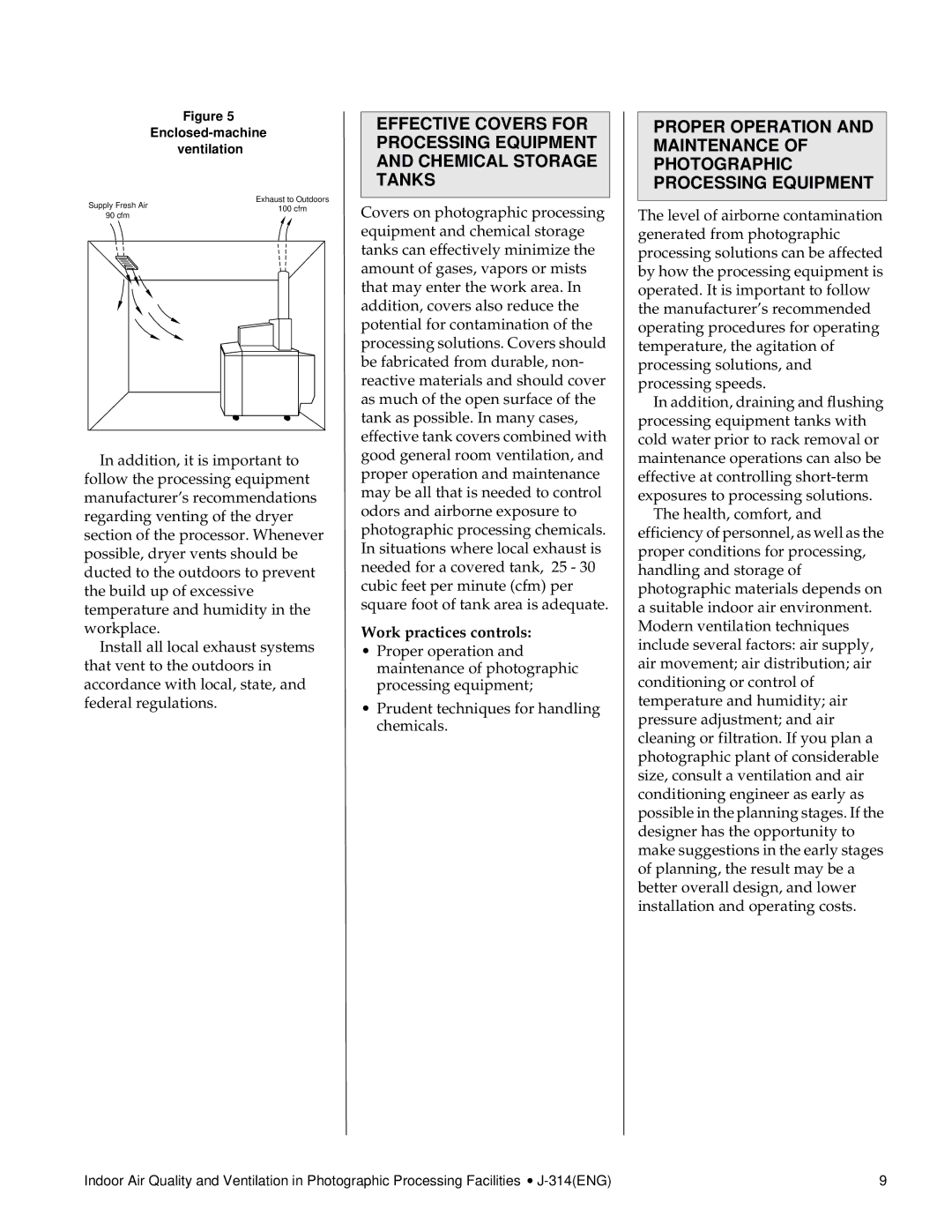
Figure 5
Enclosed-machine
ventilation
Exhaust to Outdoors
Supply Fresh Air | 100 cfm | ||||
90 cfm | |||||
|
|
| |||
|
|
|
|
| |
|
|
|
|
| |
|
|
|
|
| |
|
|
|
|
| |
|
|
|
|
| |
In addition, it is important to follow the processing equipment manufacturer’s recommendations regarding venting of the dryer section of the processor. Whenever possible, dryer vents should be ducted to the outdoors to prevent the build up of excessive temperature and humidity in the workplace.
Install all local exhaust systems that vent to the outdoors in accordance with local, state, and federal regulations.
EFFECTIVE COVERS FOR PROCESSING EQUIPMENT AND CHEMICAL STORAGE TANKS
Covers on photographic processing equipment and chemical storage tanks can effectively minimize the amount of gases, vapors or mists that may enter the work area. In addition, covers also reduce the potential for contamination of the processing solutions. Covers should be fabricated from durable, non- reactive materials and should cover as much of the open surface of the tank as possible. In many cases, effective tank covers combined with good general room ventilation, and proper operation and maintenance may be all that is needed to control odors and airborne exposure to photographic processing chemicals. In situations where local exhaust is needed for a covered tank, 25 - 30 cubic feet per minute (cfm) per square foot of tank area is adequate.
Work practices controls:
•Proper operation and maintenance of photographic processing equipment;
•Prudent techniques for handling chemicals.
PROPER OPERATION AND MAINTENANCE OF PHOTOGRAPHIC PROCESSING EQUIPMENT
The level of airborne contamination generated from photographic processing solutions can be affected by how the processing equipment is operated. It is important to follow the manufacturer’s recommended operating procedures for operating temperature, the agitation of processing solutions, and processing speeds.
In addition, draining and flushing processing equipment tanks with cold water prior to rack removal or maintenance operations can also be effective at controlling
The health, comfort, and efficiency of personnel, as well as the proper conditions for processing, handling and storage of photographic materials depends on a suitable indoor air environment. Modern ventilation techniques include several factors: air supply, air movement; air distribution; air conditioning or control of temperature and humidity; air pressure adjustment; and air cleaning or filtration. If you plan a photographic plant of considerable size, consult a ventilation and air conditioning engineer as early as possible in the planning stages. If the designer has the opportunity to make suggestions in the early stages of planning, the result may be a better overall design, and lower installation and operating costs.
Indoor Air Quality and Ventilation in Photographic Processing Facilities • | 9 |
